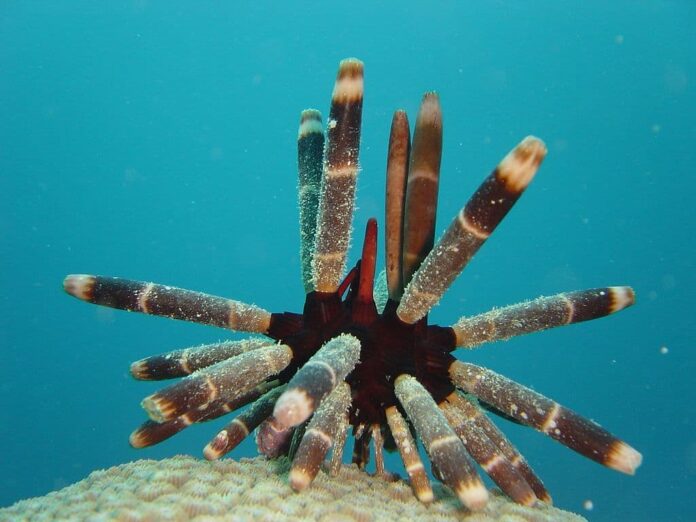There are almost a thousand sea urchin species in the world, and we only know some of them. We all think of the spiky little balls when we think about sea urchins but they are more than that. This is why I am going to introduce you to 10 sea urchin species with unique appearances you should see. Let’s see how many of them below that you know.
1Black Long-Spined Urchin
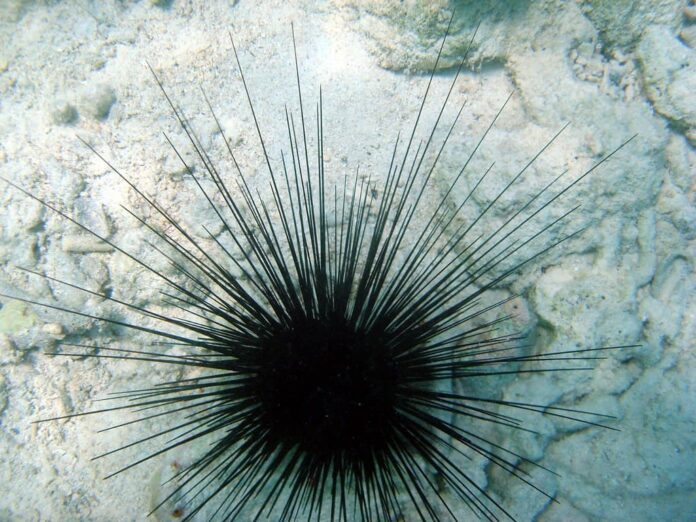
Scientific Name: Diadema Antillarum
This is one of the most common sea urchin species that you often see in photos, little spiky bombs. The black long-spined urchins also go by the name lime urchin, and they are very easy to recognize. Their entire body is covered with long black and white stinging spines that are not safe to touch. While most sea urchin spines are 1 to 3 centimeters, the spines of this sea urchin species are usually 10 to 12 centimeters. More than that, the spines of the larger ones can be as long as 30 centimeters. These spines are extremely fragile and they snap and break easily, and stepping on one is not comfortable.
How do they move? These sea urchins move on the reef using their cylindrical tube feet that operate as hydraulics. It can force water through its respiratory system to inflate and straighten the feet which allows it to walk. On top of that, this behavior also allows them to grasp food as well. One of the best things about them is that they are important herbivores that feed on algae and seagrasses sometimes. Since they are very sensitive to light, they only feed at night. These sea urchins are very abundant on the coral reefs of the Western Atlantic and Caribbean basin.
2Black Sea Urchin
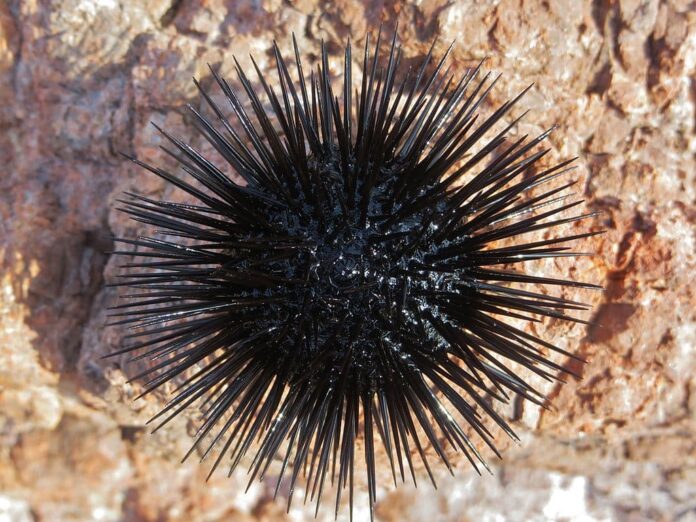
Scientific Name: Arbacia Lixula
Looks like the black long-spined sea urchin but different, the black sea urchins have shorter spines. It has a deep black color with a hemispherical shape, and the spines remain erect all the time. This sea urchin species is from Europe, living on rocky shores on the coast of the Mediterranean Sea and Micronesian Islands. Their favorite food is red algae and filamentous algae available near them as they don’t really move much. These sea urchins live in large groups and individually hunt at night around their gregarious spots.
3Caribbean White Sea Urchin
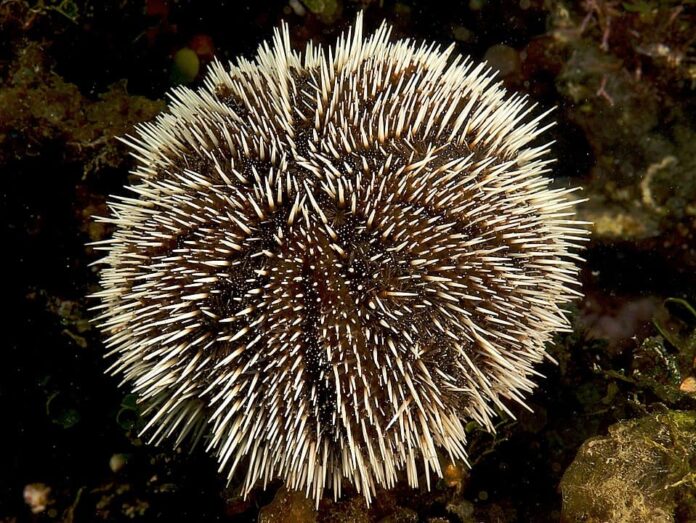
Scientific Name: Tripneustes Ventricosus
For some reason, people usually call the Caribbean white sea urchins the West India sea egg. A Caribbean white sea urchin’s test (hard shell) is dark in color, usually black, dark purple, or reddish brown. The test can be around 10 to 15 centimeters big while its white spines are 1 to 2 centimeters long. These spines are highly venomous and they are strong enough to pierce through a wet suit. While looking tough, these spines play an important role in protecting the fleshy undersides of these sea urchins.
This sea urchin species is common in the Caribbean Sea, the Bahamas, and Florida, living in shallow parts. They inhabit rubble areas, seagrass meadows, and shallow rocky reefs. Young ones hide in crevices and under rocks during the day to avoid predators while larger ones stay out in the open. Adults also have the habit of grabbing pieces of pebbles, seaweed, or shells with their tube feet and covering themselves. This could be a form of camouflage to protect themselves from predators and the sun. Predators like large wrasses and triggerfish can nibble away their spines before turning them over to eat the fleshy undersides.
4Fire Urchin
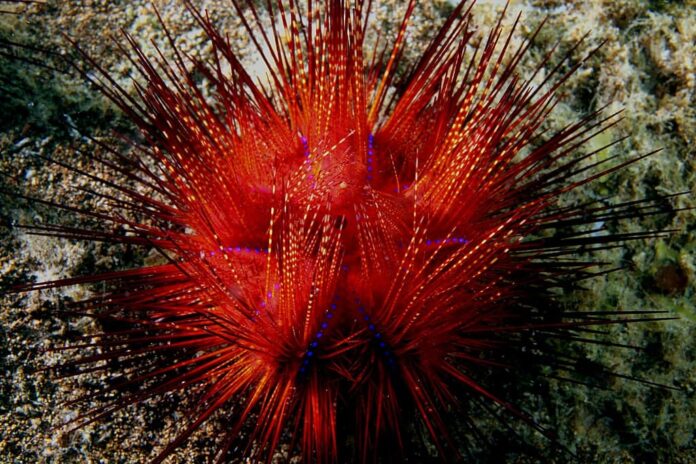
Scientific Name: Astropyga Radiata
The fire urchin, false fire urchin, or red urchin is another large sea urchin species with long spines. Its test diameter can reach up to 20 centimeters while the spines are around 4 centimeters long. The spines are long and hollow, and there are two kinds of spines on one urchin, the short ones are venomous. There are 5 vertical clusters on the test so there are V-shaped areas with no spines. These bare areas are red in color with lines of iridescent blue dots; hence another nickname: blue-spotted urchin. This one is also common in the Indo-Pacific Ocean, living in bays and lagoons with coral rubble, sand, and shingle. They are usually in large aggregations to protect smaller and vulnerable creatures like crabs and shrimps that inhabit their spines.
5Flower Urchin
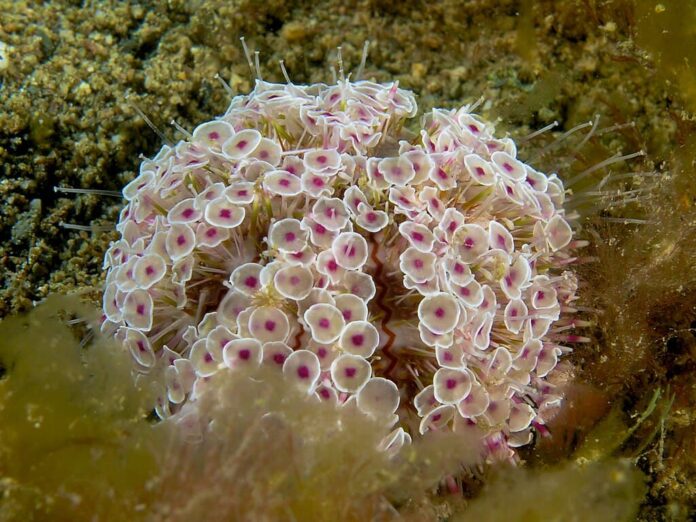
Scientific Name: Toxopneustes Pileolus
Flower urchins usually reach a diameter of 15 to 20 centimeters, and adults have 5 segments that look absolutely beautiful. A nice name with a fearsome reputation, the flower urchin is the most dangerous sea urchin species in the world. Flower urchins got their name from the unique flower-like appendages that cover the entire test. The appendages are usually pinkish-white to yellowish-white in color, with a purple central dot. What is dangerous about them is the short and blunt spines beneath their appendages, like a secret weapon.
A simple touch on the flower-like appendages is more than enough for the flower urchin to deliver its excruciating sting. The sting can cause contractions in smooth muscle in many major organs, including cardiac tissue. This can lead to respiratory problems, severe pain, and even paralysis, and that is not good underwater. Flower urchins inhabit coral reefs, coral rubble, rocky or sandy environments, and seagrass beds of the tropical Indo-West Pacific. Across their range, they feed on algae, bryozoans, and organic detritus. Despite being dangerous, these urchins still cannot escape the fate of being human food. People in East Asia, Southeast Asia, and the Pacific Islands harvest flower urchins for their edible gonads.
6Pencil Urchin
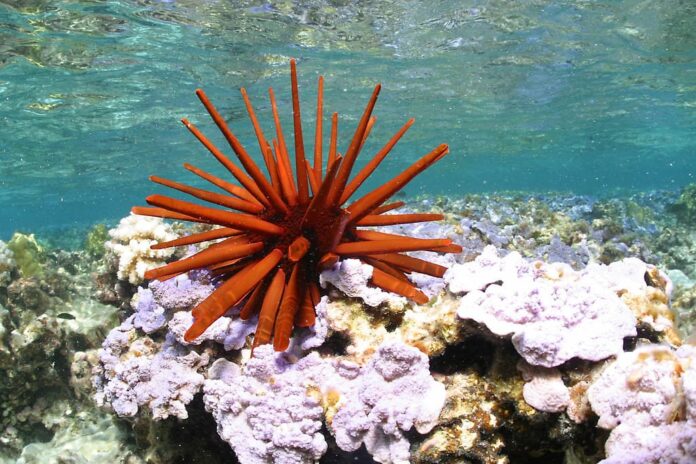
Scientific Name: Heterocentrotus Mamillatus
Not the typical pencil any of us expect, pencil urchins aka red slate pencil urchins look rather weird. A pencil urchin has a body that can grow larger than 8 centimeters with spikes that are 10 centimeters long. Most pencil urchins are red but brown and purple ones are not uncommon. These thick and rounded spines allow the urchins to bore into hard substrates and defend themselves from predators, pressure, and wave drag.
Pencil urchins have a wide distribution throughout the tropical waters of the Indo-Pacific region, especially in Hawaii. They live in roam in reefs and subtidal zones where they can burrow into hard sediments like basalt, coral, and limestone. Pencil urchins stay still under ledges during the day and begin their search for food as the light goes out. Their primary diet is encrusting coralline algae but they also feed on bivalves, sponges, and other algae around them as well.
7Red Sea Fire Urchin
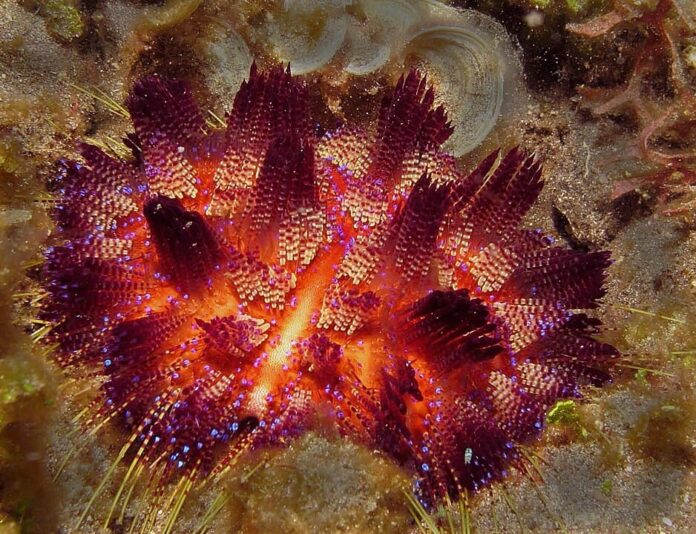
Scientific Name: Asthenosoma Varium
The name definitely does justice to the appearance of this sea urchin, how stunning is that? Looks like a mini volcano, pretty cute. A fire urchin can grow up to 25 centimeters in diameter, and it has a reddish-brown color. What’s so unique about them is the two series of spines that are arranged in five radial bands. The primary spines are on the upper surface, and they are short, thick, and sharply pointed. Each of these spines is hollow but filled with toxins. Then we have the secondary spines that are long, flexible, slender, and blunt. Watch out for these venomous tipped spines as they can inflict a painful sting that lasts for several hours. The combination of the color and pain it can cause makes its name a perfect description.
Fire urchins live on rubble and sand sea bottoms of the Indo-Pacific from the Red Sea to Australia and Southern Japan. They inhabit coral environments where they feed on algal film that covers the substrate and encrusting invertebrates like sponges. Some of their common habitats are external reefs, lagoons, and sandy or stony bottoms. And just like other sea urchins out there, this one also hides during the day and comes out at night.
8Rock Boring Urchin
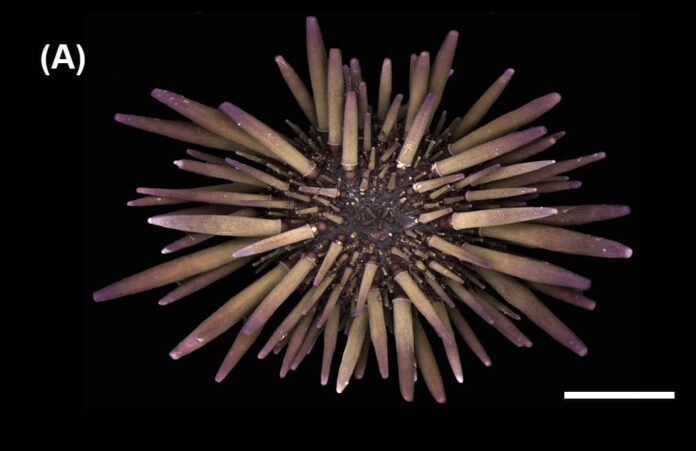
Scientific Name: Echinometra Lucunter
One of the unique features of this sea urchin is that its test is rather elliptical than round. A rock boring urchin can reach a diameter of around 8 centimeters while its short spines have sharp tips. The test is black to deep brownish-red, and the spines are usually black in color. When attacked, they can wave their spines and tube feet as a defense and escape mechanism which is quite impressive. These spiky creatures live in shallow parts of the Caribbean Sea and Western Atlantic Ocean. They live on coral reefs and shallow rocky areas, usually among seagrasses and under broken corals or rock slabs. As for food, rock boring urchins feed mostly on algae but they also eat seagrasses as well. And just like other sea urchin species, they fall prey to humans.
9Sea Potato
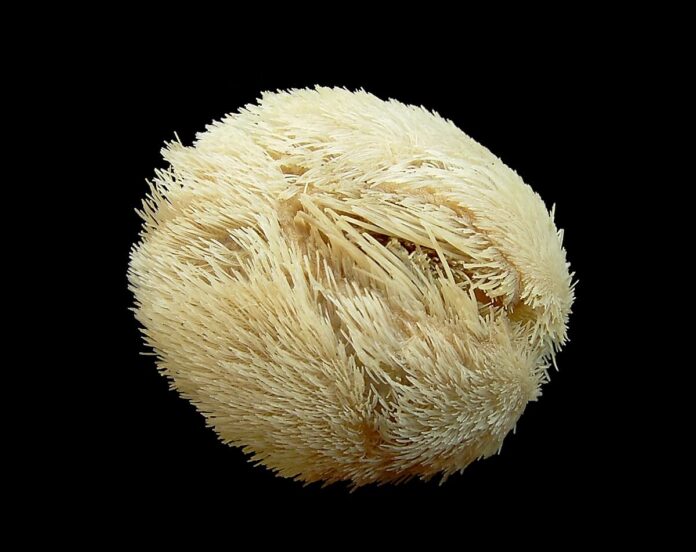
Scientific Name: Echinocardium Cordatum
Some say they’re the ugly urchin cousins while some find the beauty in their shape; hence nickname: common heart urchin. A sea potato has a heart shape test with a dense layer of yellowish spines that point backwards. The test is from 6 to 9 centimeters in length It is usually fawn in color but the ones that wash up ashore lost their spines and are white instead. No one would ever think that they are sea urchins, the appearance is totally different from most sea urchins out there. The population of this sea urchin species is quite sparse, ranging from the Atlantic Ocean to the Pacific Ocean. They inhabit intertidal and subtidal, usually in coarse clean sand, fine clean sand, muddy sand, and sandy mud areas. These urchins can bury up to 10 centimeters deep in the sand where they feed on various organisms.
10Violet Sea Urchin
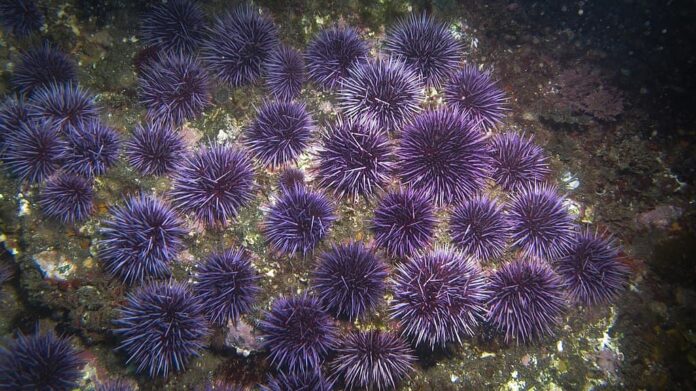
Scientific Name: Strongylocentrotus Purpuratus
Here we have one of the most striking sea urchin species, and that deep purple color says it all. Adults are around 7 to 9 centimeters big, and juveniles have light green spines that change to purple as they mature. The spherical test of the urchin is covered by sharp purple spines that they use for protection. The violet sea urchins live along the eastern edge of the Pacific Ocean, and they are commonly called Pacific purple sea urchins. They live in lower intertidal and nearshore subtidal areas where they feed on large marine algae like bull kelp and giant kelp. However, they also occasionally feed on algae, animal matter, and decaying plants as well.
Related Post: Strange-Looking Bristle Worm Species

